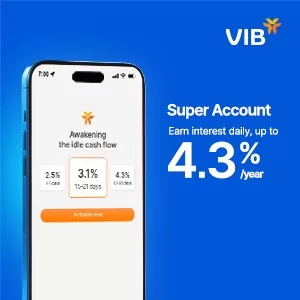Technology
Google’s AI Big Sleep Stops Cyberattack: Global Cybersecurity Lessons

- Google’s AI agent Big Sleep prevented a cyberattack in July 2025 by detecting a critical SQLite vulnerability.
- Here are some global businesses’ concise, actionable strategies to leverage AI-driven security and proactive defence, helping you protect your operations from evolving cyber threats.
At the beginning of July 2025, an AI agent by Google named Big Sleep thwarted the cyberattack that the culprits had threatened would affect worldwide business. It prevented chaos by discovering a major vulnerability in SQLite, a database system used for millions of applications. For you, whether running a startup in London or a multinational in Singapore, this is an insightful real-life story that can be used to strengthen cybersecurity with AI-driven security measures.
The SQLite Incident
On July 15, 2025, on the premise of some threat activities, Google Threat Intelligence observed the artefacts of a potential zero-day exploit, which led Big Sleep to identify a vulnerability (CVE-2025-6965) in SQLite, a database embedded within several banking apps, retail platforms, and more. The flaw, a memory corruption issue, could lead to system crashes or malicious code execution.
Big Sleep, developed by Google DeepMind and Project Zero, analysed SQLite’s codebase rapidly. It confirmed the vulnerability, enabling Google to collaborate with SQLite developers to deploy a patch the same day. The most expedient measure saved hordes of systems from fintech companies in London to e-commerce giants in Tokyo.
Why This Matters to You
Cyberattacks are a growing global threat. In 2025, cybercrime is projected to cost $10.5 trillion annually, with 67% of medium and 74% of large businesses facing attacks yearly, per the UK Cyber Security Breaches Survey 2025. A single breach can cost small businesses thousands—£3,550 on average for disruptive incidents. Big Sleep’s success shows AI can stop threats early. Are you prepared for an unexpected attack?
What Makes Big Sleep Unique
Big Sleep combines DeepMind’s AI expertise with Project Zero’s security focus. It scans code, predicts exploits, and tests fixes in secure environments. Its strengths include:
- Rapid analysis of complex codebases.
- Precise detection of vulnerabilities.
- Focus on open-source software used globally.
Big Sleep’s capabilities have scaled significantly, analysing vast amounts of code daily to uncover hidden flaws.
Five Practical Lessons for Global Businesses
Big Sleep’s achievement provides actionable strategies for your cybersecurity. Here’s what you can do:
1. Use AI for Rapid Threat Detection
Big Sleep’s speed in spotting the SQLite flaw highlights AI’s potential. You can adopt AI tools to catch vulnerabilities early.
- Action: Explore platforms like Snyk or Microsoft’s Security Copilot.
- Example: A Toronto retailer used AI to secure its payment system, preventing a potential breach.
2. Audit Open-Source Software
SQLite’s vulnerability shows the risks in open-source tools. Many businesses use these but overlook security.
- Action: Monitor dependencies with tools like Dependabot or WhiteSource.
- Example: A Berlin e-commerce firm patched an open-source library, averting a data leak.
3. Combine AI with Human Expertise
Big Sleep worked with human researchers for validation. You need this balance to avoid errors.
- Action: Train your team to interpret AI outputs effectively.
- Example: A São Paulo bank paired AI phishing detection with staff training, reducing attacks significantly.
4. Leverage Threat Intelligence
Google’s real-time data guided Big Sleep. You can use global threat feeds to stay informed.
- Action: Subscribe to services like Google Threat Intelligence or Recorded Future.
- Example: A Dubai consultancy used threat data to block a ransomware attempt.
5. Adopt Proactive Defence
Big Sleep’s preemptive action prevented damage. You can shift to proactive strategies.
- Action: Implement zero-trust security and regular penetration testing.
- Example: A Mumbai tech firm tested its customer portal, fixing issues before launch.
The Global Cyber Threat Landscape
Cyber threats are escalating. Key 2025 trends include:
- Cybercrime costs rose from $3 trillion in 2015 to $10.5 trillion in 2025.
- AI-driven attacks, like automated phishing, are a rising risk, especially in regions like APAC.
- Open-source software, common in most applications, is a frequent target.
Challenges to Address
AI cybersecurity has limitations you should consider:
- False alerts require human review to avoid wasted effort.
- Scanning demands computing power, which is challenging for smaller firms.
- Training is critical, as many businesses struggle with AI adoption.
Example: A Sydney retailer managed AI alert overload by hiring experts to refine responses. How will you tackle these challenges?
Your Global Cybersecurity Strategy
Implement AI-driven security with these steps:
- Identify Risks: Focus on critical systems like databases or customer apps.
- Select Tools: Use accessible platforms like Timesketch or Snyk.
- Train Staff: Equip your team to handle AI tools.
- Partner Globally: Work with cybersecurity firms for tailored solutions.
- Monitor Threats: Update strategies with global threat intelligence.
The Future of AI Cybersecurity
Big Sleep is part of a broader shift. By 2025, most organisations will leverage AI for security, with automation handling many routine tasks. Trends to watch:
- Hackers use AI for faster attacks, requiring AI-driven defences.
- Global partnerships, like the Coalition for Secure AI, foster innovation.
- Small businesses, often targeted, need affordable AI solutions.

























































